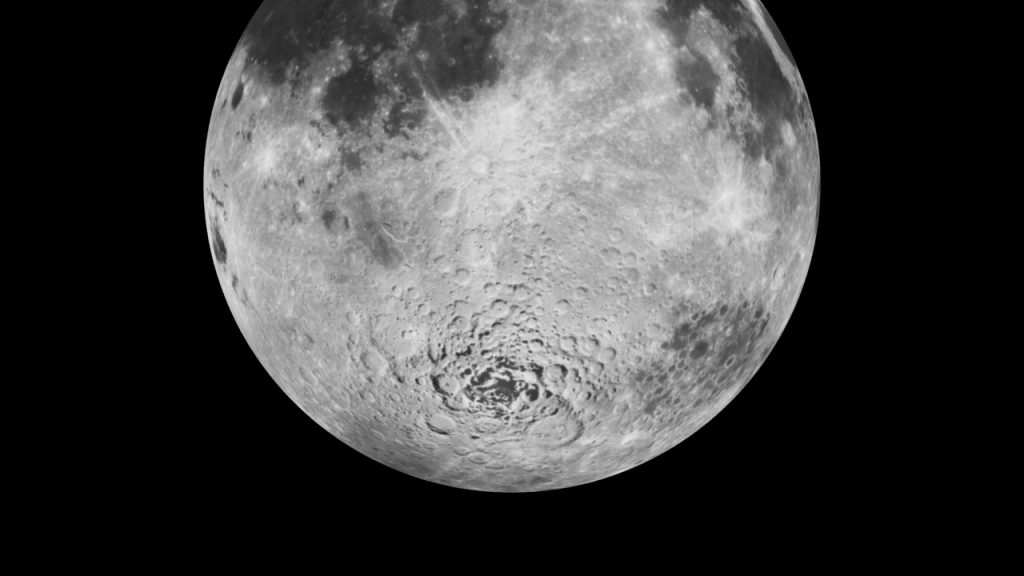For a few years now, the European Space Agency (ESA) has been talking seriously about building a habitable village on the moon, and 3D printing is a big part of that plan. Because construction supplies can’t be feasibly transported in a spaceship, building habitats on the moon would involve 3D printing them from materials found on the moon’s surface. In a paper entitled “Additive Manufacturing for a Moon Village,” a group of researchers examines the feasibility of 3D printing structures on the moon, and what 3D printing technologies might be used to do so.
Five different structure concepts are presented in the paper:
- Spherical inflatable, a spherical pneumatic envelope with an interior structural cage to support the floors, walls and equipment
- Tuft-Pillow, a structural concept that consist of quilted inflatable pressurized tensile structures using fiber composites
- Lunar base cable structure in a crater, which would use natural features on the moon to reduce excavation and the amount of shielding that is needed
- Three-hinged arch main structure, an efficient way of coping with structural requirements
- Lunar lava tubes, which would involve building below the moon’s surface
 The researchers discuss the idea of using in-situ resources, or regolith, the material found on the moon. Many simulations have been carried out already, with 3D printed structures being built from materials similar to those that naturally occur on the moon’s surface.
The researchers discuss the idea of using in-situ resources, or regolith, the material found on the moon. Many simulations have been carried out already, with 3D printed structures being built from materials similar to those that naturally occur on the moon’s surface.
“Additive manufacturing techniques are required to be tested in analogues, because the Moon environment may affect both its operation and performance,” the researchers point out. “In particular, successful operation in vacuum with reduced gravity (approximately 17% of the Earth’s one) is crucial for the installation and later use of the machinery. In addition, the permanent exposition of the building to a harsh radiation environment as well as the micrometeorite striking should be assessed.”
The main characteristics that need to be reproduced for testing are chemical composition, mineralogy, particle size distribution and engineering properties. Moondust varies in constitution depending on where it is found on the moon, so those variations also need to be taken into consideration. The researchers then discuss the different types of additive manufacturing and how they could be applied to use with moon regolith, rejecting stereolithography, for example, as non-feasible with that kind of material. Powder bed fusion is highlighted as the best method, with lenses capturing solar rays replacing laser beams.
The researchers point to an experiment performed by Markus Kayser in 2010, in which beams of sunlight were used to 3D print sand in the desert. Using this method on the moon would require strategically locating the moon base in a highly sunlit area, such as the south pole, which has been proposed by the ESA.
“The Moon Village mission aims for the construction of a permanent base on the Moon surface capable of providing life-support for a long mission duration,” the researchers conclude. “Additive manufacturing techniques using in-situ resources have been considered an alternative to help the construction of the permanent base, because of the huge cost of sending mass to the lunar surface. The raw material to be used is the regolith, which can be broadly described as the dust obtained after centuries of micrometeorite striking. The Moon Village can be a suitable frame to further develop additive manufacturing, adapting it to solve the new challenges.”
Authors of the paper include Nuria Labeaga Martínez, M. Sanjurjo-Rivo, J. Díaz-Álvarez and J. Martínez-Frías.
Discuss this and other 3D printing topics at 3DPrintBoard.com or share your thoughts below.
Subscribe to Our Email Newsletter
Stay up-to-date on all the latest news from the 3D printing industry and receive information and offers from third party vendors.
You May Also Like
3D Printed Heat Spreader Could Improve Efficiency of Electronics
The low-hanging fruit for decarbonization has long been improving the efficiency of existing systems, hence the justification for LED lights and ENERGY STAR certified appliances. While such minor moves are...
3D Printing News Unpeeled: Marine Gearboxes, 3D Printed Motors and $1.7 Million in Seed Funding
UK based Equipmake just released their Ampere-220 e-axle system. The system, which is meant for high performance electric cars, was similar to one released on the Ariel HIPERCAR. It has...
CEAD Unveils 36-Meter-Long 3D Printer for Abu Dhabi’s Al Seer Marine
CEAD, a Dutch original equipment manufacturer dedicated to large-format 3D printers, has unveiled what it claims to be the world’s largest robotic arm-based 3D printer. At 36 meters long and...
3D Printed Biocomposites Could Help Reduce Marine Plastic Pollution
Concerns about the impact of plastic litter and microplastics in the oceans are at the forefront of environmental study. For decades, the marine environment has suffered from the degradation of...






































